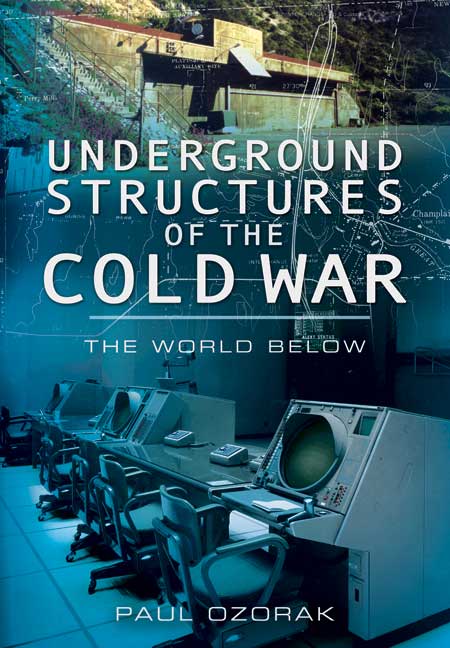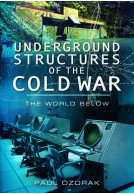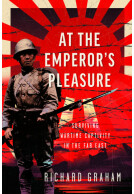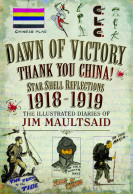Underground Structures of the Cold War (Hardback)
The World Below
Imprint: Pen & Sword Military
Pages: 362
ISBN: 9781848844803
Published: 19th April 2012
Last Released: 30th May 2015
(click here for international delivery rates)
Order within the next 9 hours, 51 minutes to get your order processed the next working day!
Need a currency converter? Check XE.com for live rates
| Other formats available | Price |
|---|---|
| Underground Structures of the… Paperback Add to Basket | £19.99 |
| Underground Structures of the… ePub (22.9 MB) Add to Basket | £6.99 |
Books on the history of fortifications are plentiful. Medieval castles, the defensive systems of the seventeenth, eighteenth and nineteenth centuries, the trenches and bunkers of the First World War, the great citadels of the Second World War – all these have been described in depth. But the fortifications of the Cold War – the hidden forts of the nuclear age – have not been catalogued and studied in the same way. Paul Ozorak's Underground Structures of the Cold War: The World Below fills the gap.
After the devastation caused by the atom bombs dropped on Hiroshima and Nagasaki and the outbreak of the Cold War, all over the world shelters were constructed deep underground for civilians, government leaders and the military. Wartime structures
were taken over and adapted and thousands of men went to work drilling new tunnels and constructing bunkers of every possible size. At the height of the Cold War, in some countries an industry of bunker-makers profited from the public's fear of annihilation.
Paul Ozorak describes when and where these bunkers were built, and records what has become of them. He explains how they would have been used if a nuclear war had broken out, and in the case of weapons bases, he shows how these weapons would
have been deployed. His account covers every sort of facility – public shelters, missile sites, command and communication centres, storage depots, hospitals.
A surprising amount of information has appeared in the media about these places since the end of the Cold War, and Paul Ozorak's book takes full advantage of it.
The extraordinary amount of data in the book is ordered and made accessible with detailed appendices, a full bibliography, notes and references. If you like acronyms this is the book for you! The level of detail shows clearly the vast amount of time and research the author has undertaken.
Robert Bartlett - Oxford and Cambridge Club Military History Group
The extensive research has been an enormous but successful task, allowing those with an interest in the Cold War to become aware of what were once very secret locations and activities. The treasure expended by governments was enormous with vast resources diverted into not just defence but also the potential for attack across the world. Now, many of these highly specialist buildings just rot gently away!
The book covers over 60 countries from Afghanistan to the USA and includes the UK which of course was and is, within easy reach of the Soviet Union. Installations ranged from missile silos to public shelters, underground bases in China and Taiwan. The threat of nuclear war went up a notch or two with the Russian invasion of parts of the Ukraine and threatening speeches by Putin.
Detailed appendices, a full bibliography, notes and references back up the vast amount of data the author has served up.
Fortress Study Group No. 106
If bunkers interest you, this is a must!
In a slightly handier format, and extended to foreign shores; is this guide to subterranean Cold War structures by Paul Ozorak. It is one of those books anyone will get something out of, be they fans of history, architecture or engineering or just interested in how crazy people can be. The book takes the form of a gazetteer of bunkers (for want or an accurate generic) worldwide and many have been photographed by the author himself, making clear his huge knowledge and vast enthusiasm for the subject.
www.warhistoryonline.co.uk
The research and the effort to produce it deserve credit in themselves.
Mr Ozorak reminds us just how crazy things were and his work adds to our knowledge of the huge resources used before the big thaw brought an end to the Cold War.
This is a most interesting book for those who want to find out more of the secrets of the Cold War. Including details about how the West planned a ”scorched earth” policy in Germany if Russian tanks had crossed the border.
Dover Express & Folkstone Herald
Bridges were built with space underneath where explosives could be placed for blowing them up as the enemy approached. The book also reveals what many of the structures are now being used for.
Underground Structures of the Cold War has to be the best book on Cold War bunkers of that period. This book covers no less than 64 nations, with installations that range from missile silos, to public shelters in Moscow, to underground air bases in China and Taiwan. It provides much information on the continuity programs of Canada and the United States, along with a wealth of details on the Minuteman ICBM and the Nike surface to air
Edgar Lapointe
missile. The author also covers a gamut of related subjects such as command, control and communicatios systems. It is well written, well researched, and well indexed. But Ozorak's book is not without shortcomings. While it includes approximately 170 photos, none are provided from satellite imagery. Such photos (e.g. of Russian missile silos) could have been obtained from any imaging compnay. Furthermore, in this kind of book I would Have expected diagrams. None are provided. As well, it makes no reference to the utility tunnels in downtown Ottawa and mistakenly ascribes the Edmonto bunker ot the province of Alberta instead of tthe city of Edmonton. But given the depth of his research and the sheer number of facilities mentioned, Ozorak should be commended.
The author has provided most of the answers to most questions asked and reported an important part of the mechanisms of Cold War, without which it is difficult to understand the nature of the conflict and the thinking of those who has to prepare for the possibility of nuclear war. A fascinating and absorbing book.
Firetrench Reviews
With secrecy regarding plans for the Cold War now coming to an end, there is much information that is beginning to surface. This includes details of the numerous bunkers and installations created to serve military purposes. Ozorak has created an incredibly detailed world wide directory of those underground structures. While the UK, US, France, Germany and Russia are well represented there are also unexpected countries such as New Zealand, Lesotho and Qatar.
MonstersandCritics
It is amazing how much information is available about these buildings - and the number that now lie useless and empty. Some admittedly have been put to use as data storage centres for internet businesses, or turned into tourist attractions.
Ozorak looks at how these installations were intended to be used, the people and volunteers which would have manned them. Then there are difficulties which people working in these bunkers actually experienced for example in Canada many bunkers faced the risk of becoming swimming pools from melted snow. In Tokyo there are even hints of James Bond scenarios with the creation of secret underground train networks. Unusual and different. Anyone interested in military history, buildings and architecture will be fascinated by this book.
Underground Structures of the Cold War does provide some interesting "firsts:"
R. Sanders
- it is the first book to show what an Emergency Action Message actually looks like,
- it is the first that I know of that lists the many communications methods the United States government would have used to transmit EAMs;
- it is the first book to show pictures of Site R,
- it is also one of the few books to discuss strategic targeting in any detail.
As the author states, the book is not meant to describe every underground Cold War facility in the world as there are too many. Entire books could be written on Swiss and Swedish bunkers. But it does provide a good glimpse of the world below. The book reads well, is well illustrated, and is defintely informative. It is well worth the price.
The Bookworm.
About Paul Ozorak
Paul Ozorak is an amateur historian with a passion for former military bases. He finds that the more secretive a base was, the more interesting it is. Fluent in French, he has also studied Russian, German, Chinese, Japanese and Spanish. A graduate in biochemistry, accounting and electronics, he now works as an accountant in Canada. Among his previous publications is another Cold War book Bunkers Bunkers Everywhere.
















